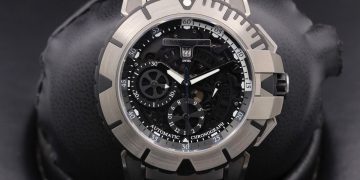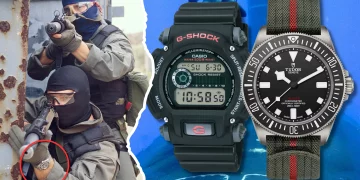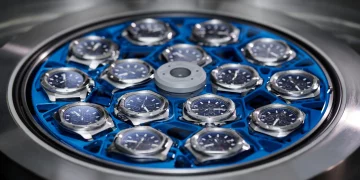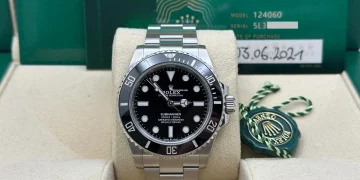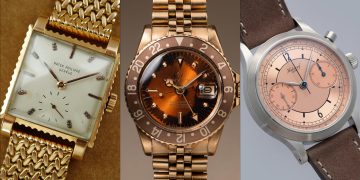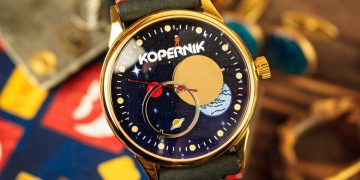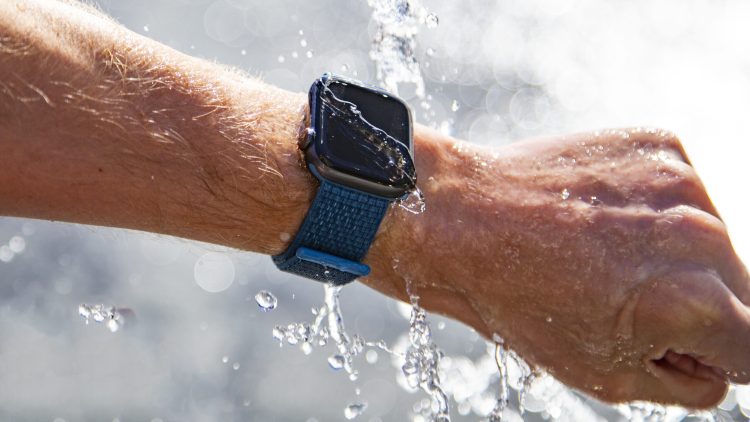When you invest in a luxury watch, one of the key features you may consider is its water resistance. Whether you’re buying a diver’s watch, a sporty chronograph, or an elegant dress watch, understanding the extent of its waterproof capabilities is crucial to ensuring it stands the test of time—and water.
In this article, we’ll explore how reliable a watch’s waterproof function really is, what you need to know to maintain water resistance, and how to avoid water damage to your high-end timepiece.
1. Understanding Water Resistance Ratings: How Waterproof Is Your Watch?
Every watch comes with a water resistance rating—a number that indicates how well it can withstand water pressure. It’s essential to know that these ratings are not always a guarantee against water damage. The rating depends on the seals, gaskets, and overall construction of the watch.
The most common water resistance ratings and their intended uses are as follows:
- 30 meters (3 ATM): This is the minimum rating, and it typically means that the watch is resistant to splashes, such as rain or washing your hands. It is not suitable for swimming or any form of submersion.
- 50 meters (5 ATM): Suitable for light swimming or showering, but not for diving or prolonged submersion.
- 100 meters (10 ATM): Ideal for swimming and snorkeling, but not recommended for deep diving.
- 200 meters (20 ATM): Designed for scuba diving and can withstand the pressure of diving into deeper waters.
- 300 meters (30 ATM) or more: These watches are meant for professional diving and are capable of withstanding extreme water pressures at great depths.
Keep in mind that water resistance is not permanent. Over time, seals and gaskets degrade, which can cause the watch to lose its waterproof capabilities. Regular maintenance is essential to preserve the watch’s resistance to water.
2. Factors That Affect a Watch’s Waterproof Integrity
Several factors can compromise the water resistance of your watch over time, and understanding these factors can help you avoid water damage.
1. Age and Wear:
- Over time, the gaskets that create the seals between the watch case and its parts (such as the crown, back case, and pushers) can degrade. Once the seals wear out, water can seep into the movement and damage internal components.
2. Temperature Changes:
- Extreme temperatures, both hot and cold, can cause materials like rubber or silicone gaskets to expand or contract, weakening the seals. This can lead to a loss of water resistance, especially if the watch is exposed to such conditions over long periods.
3. Impact or Shock:
- Dropping your watch or exposing it to physical shocks can compromise its water resistance. The case or glass might crack, or the seals might loosen, allowing water to penetrate.
4. Unscrewing the Crown:
- The crown is one of the most vulnerable parts of a watch when it comes to water resistance. If the crown is not securely screwed down, water can easily penetrate the case.
5. Exposure to Chemicals and Saltwater:
- Saltwater, chlorine, and harsh chemicals can weaken the seals and cause corrosion over time. Prolonged exposure to these elements can lead to irreversible damage to the seals and other parts of the watch.
3. Regular Maintenance: How to Keep Your Watch Water-Resistant
To avoid water damage, regular maintenance is essential. A high-end watch can lose its waterproof properties over time, but with the proper care, you can extend its water resistance and prevent costly repairs.
1. Seal and Gasket Replacement:
- Over time, the seals and gaskets inside your watch can degrade. During regular servicing, the watchmaker should check the seals and replace any that are worn out to ensure the watch remains water-resistant.
2. Water Resistance Testing:
- Professional watchmakers can conduct a water resistance test during routine servicing. They use special equipment to simulate water pressure and ensure that the watch remains sealed under specific depths, such as 30 meters, 100 meters, or 200 meters.
3. Avoid Water Exposure During Repairs:
- If your watch is undergoing repair or battery replacement, ensure that the crown is properly sealed, and the caseback is correctly screwed or sealed before exposing it to any water.
4. Annual Checkup:
- It’s a good idea to take your luxury watch for an annual inspection to ensure that its water resistance is intact. This will help identify any potential issues before they cause damage to the internal movement or seals.
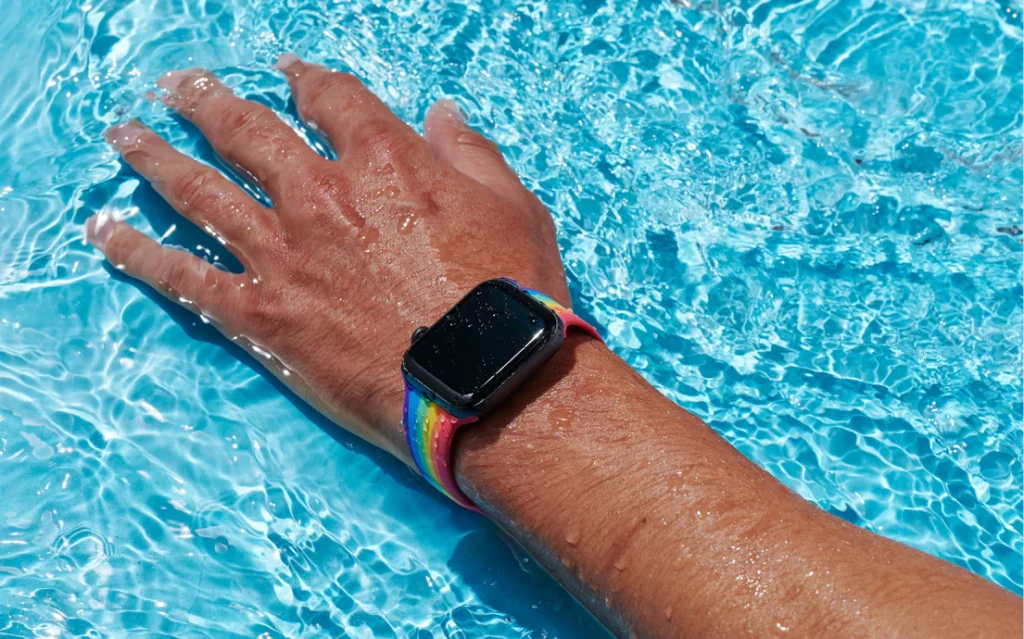
4. How to Avoid Water Damage to Your Luxury Watch
Despite having a waterproof rating, your luxury watch can still suffer from water damage if you’re not careful. Here are practical steps to protect your watch from water-related issues:
1. Know Your Watch’s Water Resistance Rating:
- Before you even consider wearing your watch near water, check its water resistance rating. If it’s rated only for 30 meters (3 ATM), avoid wearing it while swimming or showering.
2. Keep the Crown Screwed Down:
- If your watch has a screw-down crown, always ensure that it is fully screwed down before exposing it to any moisture or water. A partially unscrewed crown is the most common cause of water damage.
3. Rinse with Fresh Water After Exposure:
- If your watch has been exposed to saltwater or chlorine (e.g., swimming in the ocean or a pool), rinse it thoroughly with fresh water afterward to prevent corrosion or deterioration of the seals.
4. Avoid Hot Water:
- Avoid wearing your watch in hot tubs or saunas. High temperatures can damage the seals and reduce the watch’s resistance to water and humidity.
5. Be Mindful of Water Pressure:
- Even if your watch is rated for water resistance, the pressure of water affects its performance. Diving deep into the ocean or wearing the watch during extreme sports could cause damage, even if it’s rated for 200 meters (20 ATM).
6. Avoid Sudden Temperature Changes:
- Avoid exposing your watch to rapid temperature changes, such as jumping from a hot sauna to a cold pool, as this can cause the materials inside the watch to contract and expand, compromising its water resistance.
5. What to Do if Your Watch Gets Wet
If you find that your luxury watch has been exposed to more water than it was rated for or if it has become completely submerged, don’t panic. Here’s what you should do:
1. Dry It Immediately:
- Gently pat your watch dry with a soft cloth to remove excess water. Don’t try to dry it with high heat, as this can damage the movement and cause condensation inside the case.
2. Remove the Watch from the Water Source:
- If you suspect the water resistance has failed or the watch has been submerged for a long time, remove it from the water immediately and avoid any further exposure.
3. Check for Fogging or Condensation:
- After water exposure, look for condensation or fog on the watch’s glass. If there’s visible fog inside the watch, this means that moisture has entered the watch, and you need to act quickly to prevent corrosion.
4. Take It to a Professional Watchmaker:
- If you notice fogging, hear unusual sounds, or find any water inside the case, take the watch to a qualified watchmaker immediately. They can disassemble the watch, dry it, and perform a detailed check to ensure no internal damage has occurred.
Conclusion: Safeguard Your Luxury Timepiece with Proper Care
While luxury watches are often designed to withstand water exposure, their ability to resist water will degrade over time without proper care and maintenance. Knowing the limits of your watch’s water resistance rating, keeping the seals intact, and avoiding unnecessary water exposure are all essential for maintaining your watch’s performance and longevity.
By following proper care guidelines and performing regular maintenance, you can enjoy the reliability and beauty of your high-end timepiece without worrying about water damage. Always consult a professional watchmaker for any concerns about your watch’s water resistance, and don’t hesitate to get regular checkups to ensure your watch is in optimal condition.



